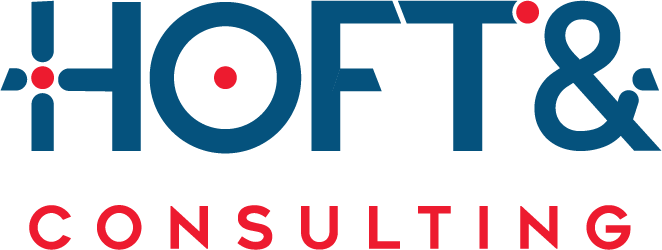INTRODUCTION
In today’s fast-paced business environment, having a well-defined long-term strategic plan is crucial for sustained growth and competitive advantage. It offers a roadmap to navigate challenges and seize opportunities. Here’s why a strategic plan is essential.
- Long-Term Vision and Direction: Provides a clear roadmap.
- Sustainable Growth: Ensures steady expansion
- Risk Management: Prepares for uncertainties.
- Resource Allocation: Guides efficient use of resources.
- Stakeholder Confidence: Builds trust and credibility.
Developing a strategic plan aligns all aspects of your business towards achieving common goals, fostering unity, and ensuring long-term success.

1. LONG-TERM VISION AND DIRECTION
PROVIDING CLEAR VISION AND DIRECTION
A long-term business strategy offers a clear vision for the company, aligning all departments towards common objectives.
- Unified Goals: Everyone works towards the same target.
- Focus and Clarity: Reduces confusion and misdirection.
- Strategic Alignment: Aligns daily operations with long-term goals.
- Motivates Employees: Encourages a sense of purpose within teams.
By fostering unity and focus, a clear long term vision empowers your organization to achieve remarkable milestones.
2. SUSTAINABLE GROWTH AND COMPETITIVE ADVANTAGE
DRIVING SUSTAINABLE GROWTH AND COMPETITIVE EDGE
A robust long-term strategy helps identify growth opportunities and establish market leadership.
- Market Analysis: Identifies lucrative opportunities
- Competitive Edge: Establishes strong market position
- Sustainable Growth: Ensures steady progress
- Long-Term Goals: Focuses on future success
By focusing on long-term objectives, your company can thrive amidst market fluctuations.
COMPANIES WITH A LONG-TERM STRATEGY OUTPERFORM
According to Harvard Business Review, companies with a clear long-term strategy outperform their peers by 4.8% annually
3. RISK MANAGEMENT AND ADAPTABILITY
ANTICIPATING AND MITIGATING RISKS
A strategic plan helps you proactively manage risks and adapt to changes.
- Trend Analysis: Monitors market shifts
- Proactive Measures: Implements preventative
strategies - Resilience Building: Enhances organizational strength
- Adaptability: Quickly responds to market changes
Being prepared for uncertainties ensures your company’s resilience and longevity.
4. RESOURCE ALLOCATION AND INVESTMENT DECISIONS
GUIDING EFFICIENT RESOURCE USE
A strategic plan ensures resources are allocated efficiently towards initiatives that drive value.
- Priority Setting: Focuses on key initiatives
- Capital Allocation: Invests wisely in growth areas
- Human Resources: Utilizes talent effectively
- Technology Investments: Embraces innovation for progress
Efficient resource allocation supports long term sustainability and growth.
5. STAKEHOLDER CONFIDENCE AND TRUST
BUILDING STAKEHOLDER CONFIDENCE
Having a clear strategy enhances the trust and confidence of stakeholders.
- Transparent Plans: Communicates future direction clearly
- Investor Trust: Strengthens financial backing.
- Customer Loyalty: Builds long-term relationships.
- Employee Morale: Boosts team confidence and
retention.
Trustworthy and transparent strategies attract and retain key stakeholders.
6. INNOVATION AND CREATIVITY
ENCOURAGING INNOVATION AND CREATIVITY
Long-term strategies create a conducive environment for innovation.
- New Ideas: Fosters creative thinking
- Technological Advancements: Adopts cutting-edge solutions
- Business Models: Explores new ways of working
- Continuous Improvement: Strives for ongoing enhancements
A culture of innovation keeps your business ahead of the curve.
STRATEGIC PLANNING INCREASES REVENUE
Research from McKinsey shows that companies with strategic plans see a 15% increase in revenue growth
7. ALIGNMENT WITH CORPORATE VALUES AND PURPOSE
ALIGNING WITH VALUES AND PURPOSE
A long-term strategy ensures alignment with the company’s core values and purpose.
- Corporate Identity: Reflects the company’s mission
- Employee Engagement: Increases alignment with values
- Customer Loyalty: Strengthens brand trust and loyalty
- Positive Perception: Enhances public image
Alignment with values fosters a cohesive and motivated organizational culture.
8. PERFORMANCE MEASUREMENT AND ACCOUNTABILITY
MEASURING PERFORMANCE AND ENSURING ACCOUNTABILITY
Establishing KPIs and metrics tracks progress and accountability.
- Key Indicators: Defines clear performance metrics
- Regular Reviews: Conducts consistent evaluations
- Goal Achievement: Tracks progress towards targets
- Accountability: Ensures responsibility at all levels
Measuring performance drives focused efforts towards strategic objectives.
RECAP
SHORTEN IT UP
Developing a robust long-term strategy is essential for sustainable growth and competitive advantage. Here’s a summary of
- The key benefits: Clear Vision: Provides unified direction
- Sustainable Growth: Ensures steady expansion
- Risk Management: Prepares for uncertainties
- Resource Allocation: Guides efficient use of resources
- Stakeholder Trust: Builds confidence
- Innovation: Encourages creativity
- Corporate Values and Purpose: Ensure Alignment
- Performance Tracking: Measures success
A strategic plan aligns your business with its long-term goals, ensuring resilience, growth, and stakeholder trust. Embrace strategic planning to navigate future challenges and seize opportunities.

Ready to unlock long-term success with a robust strategic plan?
Contact us today to discover how our expert consulting services can propel your business to new heights!
Email:- CONSULT@HOFT-GLOBAL.CO
📞 UAE +971 5626 46830
📞 SAUDI +966 540 523612
📞 UK +44 7956 842822







